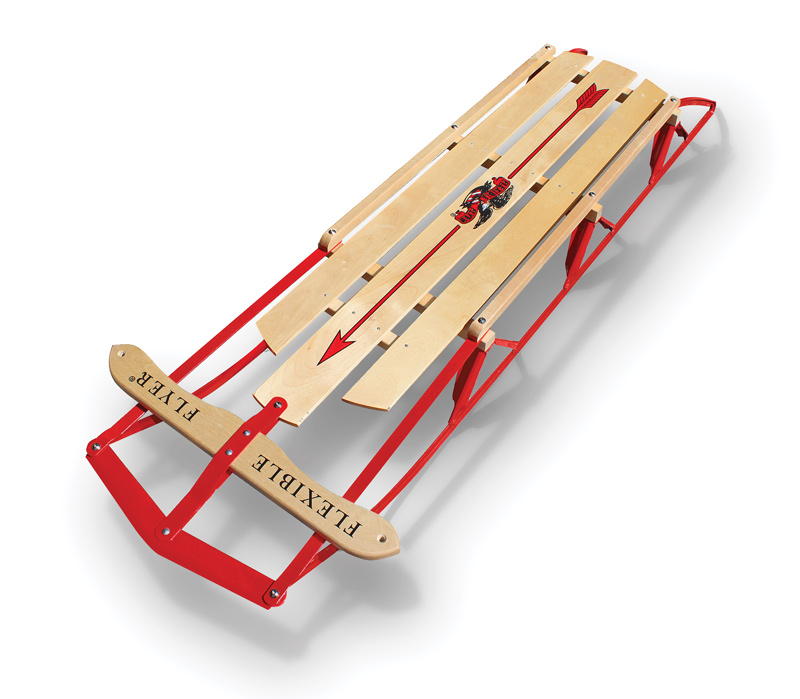
Flexible Flyer. Photo courtesy of Paricon
By Jennifer Hazard
From our February 2022 issue
Hank Morton’s great-grandparents, Henry and Lucinda Morton, started making sleds by hand in their Oxford Hills home in 1861 — gorgeous rides with gracefully curved wooden runners, their decks embellished with art hand-painted by the couple’s son, William, no two of them alike. Over time, their in-home operation evolved into the Paris Manufacturing Company, and their wooden-runner sleds were precursors to a steerable, steel-runner version known as a Speedaway. Today, the old hand-painted sleds — adorned with animals, ships, floral patterns, and more — are collector’s items. Hank Morton, the 86-year-old patriarch of what’s now called Paricon, knows of one old sled, bedecked with a colorful parrot, that recently sold for $10,000.
By the late 1970s, Morton’s family company was the only one in America still making steel runners. Today, Paricon’s inventory also includes everything from metal saucers to inflatables to plastic utility sledges, and the steel runners are no longer called Speedaways. In 2005, Paricon acquired the Flexible Flyer brand, a competitor from back in the day. Among vintage-sled enthusiasts, Speedaways and Flexible Flyers are known as the Ford and Chevy of 20th-century steerable runners, but the latter had more nostalgic name recognition, so now, all of Paricon’s sleds are marketed as Flexible Flyers.
The design of the company’s steel runners has changed little from the earliest models of Speedaways, although they’re made in Taiwan these days. Overseas manufacturing is one of many changes Morton has seen since joining the family business in his 20s. Though he’s technically retired, he still helps his three sons run the show, and he doesn’t hesitate if you ask him what’s memorable about more than 60 years in the sled biz: that’d be testing out the products on a man-made hill behind the factory. “There were hay bales at the bottom to keep us from running into anything,” Morton remembers with a laugh. “It was great fun.”
If you like watching grown adults fly face-first down mountains at terrifying speeds, the New England Runner Sled Association hosts two spectator-friendly races in Maine each winter: the Fastest Runner Sledder in All the Land Race, on Montville’s Hogback Mountain, in February, and the Fastest Runner Sledder in the Valley Race, at Auburn’s Lost Valley ski mountain, in March.



